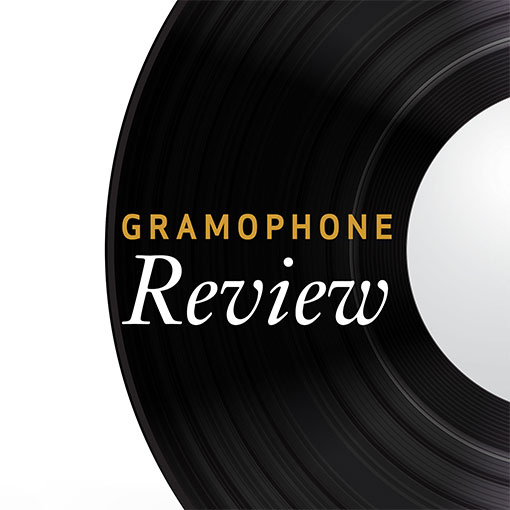Prokofiev Violin Sonatas 1 & 2
View record and artist detailsRecord and Artist Details
Composer or Director: Sergey Prokofiev
Label: DG
Magazine Review Date: 2/1989
Media Format: CD or Download
Media Runtime: 56
Mastering:
DDD
Catalogue Number: 423 575-2GH

Tracks:
| Composition | Artist Credit |
|---|---|
| Sonata for Violin and Piano No. 1 |
Sergey Prokofiev, Composer
Sergey Prokofiev, Composer Shlomo Mintz, Violin Yefim Bronfman, Piano |
| Sonata for Violin and Piano No. 2 |
Sergey Prokofiev, Composer
Sergey Prokofiev, Composer Shlomo Mintz, Violin Yefim Bronfman, Piano |
Composer or Director: Sergey Prokofiev
Label: EMI
Magazine Review Date: 2/1989
Media Format: CD or Download
Media Runtime: 68
Mastering:
DDD
Catalogue Number: 749787-2

Tracks:
| Composition | Artist Credit |
|---|---|
| Sonata for Violin and Piano No. 1 |
Sergey Prokofiev, Composer
Alexander Lonquich, Piano Frank Peter Zimmermann, Violin Sergey Prokofiev, Composer |
| Sonata for Violin and Piano No. 2 |
Sergey Prokofiev, Composer
Alexander Lonquich, Piano Frank Peter Zimmermann, Violin Sergey Prokofiev, Composer |
| (The) Love for Three Oranges, Movement: March |
Sergey Prokofiev, Composer
Alexander Lonquich, Piano Frank Peter Zimmermann, Violin Sergey Prokofiev, Composer |
| (5) Melodies |
Sergey Prokofiev, Composer
Alexander Lonquich, Piano Frank Peter Zimmermann, Violin Sergey Prokofiev, Composer |
Author:
For a moment or two I had my doubts about the recorded balance. The piano sound is very immediate, the ambience on the generous side and the whole sound-image almost larger than life; and there is so much intensity in Mintz and Bronfman's First Sonata opening that I wondered whether they shouldn't have kept a little in reserve. All doubts vanished, however, in the coda to this movement, that extraordinary inspiration likened by Prokofiev to ''the wind in a graveyard''. The stricken quality of this passage is most movingly realized, and here, as throughout both sonatas, Bronfman's sense of atmosphere is especially acute, vindicating the comparatively forward placing of the piano. Mintz is scarcely less imaginative, being generally rather sparing with vibrato and so the more thrilling when he turns on the emotional juice. Making direct comparisons with Oistrakh and Oborin (Le Chant du Monde/Harmonia Mundi) I rather think that Mintz and Bronfman are even closer to the very special poignancy of this wonderful music.
Unlike Mordkovich and Oppitz on Chandos, they also adapt sensitively to the rather different requirements of the Second Sonata, not attempting to overwhelm the score with surface expression and excitability but remaining alive to all the nuances within its alternately reflective and playful moods. Some corners of the work are perhaps not so successfully illuminated as others—for instance the first movement repeat (shouldn't this shed new light on the material?) and the opening of the slow movement (are the portamentos really necessary?). But this remains an outstanding performance and I recommend the issue with the greatest enthusiasm.
Had Zimmermann and Lonquich appeared at any other time they would probably have earned a warm welcome, too. They are a well-coordinated duo, commanding and forceful where necessary, but also capable of sensitive shadings, and their reading of the Second Sonata is far better thought-out than Ricci and Argerich's (on Etcetera/Harmonia Mundi). The latter treat the sonata as a virtuoso showpiece, glossing over its poetry and even in their own terms sounding superficial, scrappy and none too successfully recorded (from a live performance in Carnegie Hall).
Zimmermann and Lonquich include the Melodies Op. 35b, arrangements of the ''Songs without words'' for voice and piano of 1920. (Oistrakh's superior account can be heard on the Harmonia Mundi issue listed above or, coupled with sonatas by Debussy, Ravel and Ysaye, on Philips reviewed last June).
But put the sonatas alongside Mintz and Bronfman's and there is a world of difference—the rather unyielding rhythm, the consistently wide vibrato and the unduly realistic accompaniments become annoying. EMI's recording is not objectionable in any obvious way, but heard alongside DG's it gives the impression that there is a kind of gauze between the players and the listener.'
Discover the world's largest classical music catalogue with Presto Music.

Gramophone Digital Club
- Digital Edition
- Digital Archive
- Reviews Database
- Full website access
From £8.75 / month
Subscribe
Gramophone Full Club
- Print Edition
- Digital Edition
- Digital Archive
- Reviews Database
- Full website access
From £11.00 / month
Subscribe
If you are a library, university or other organisation that would be interested in an institutional subscription to Gramophone please click here for further information.





